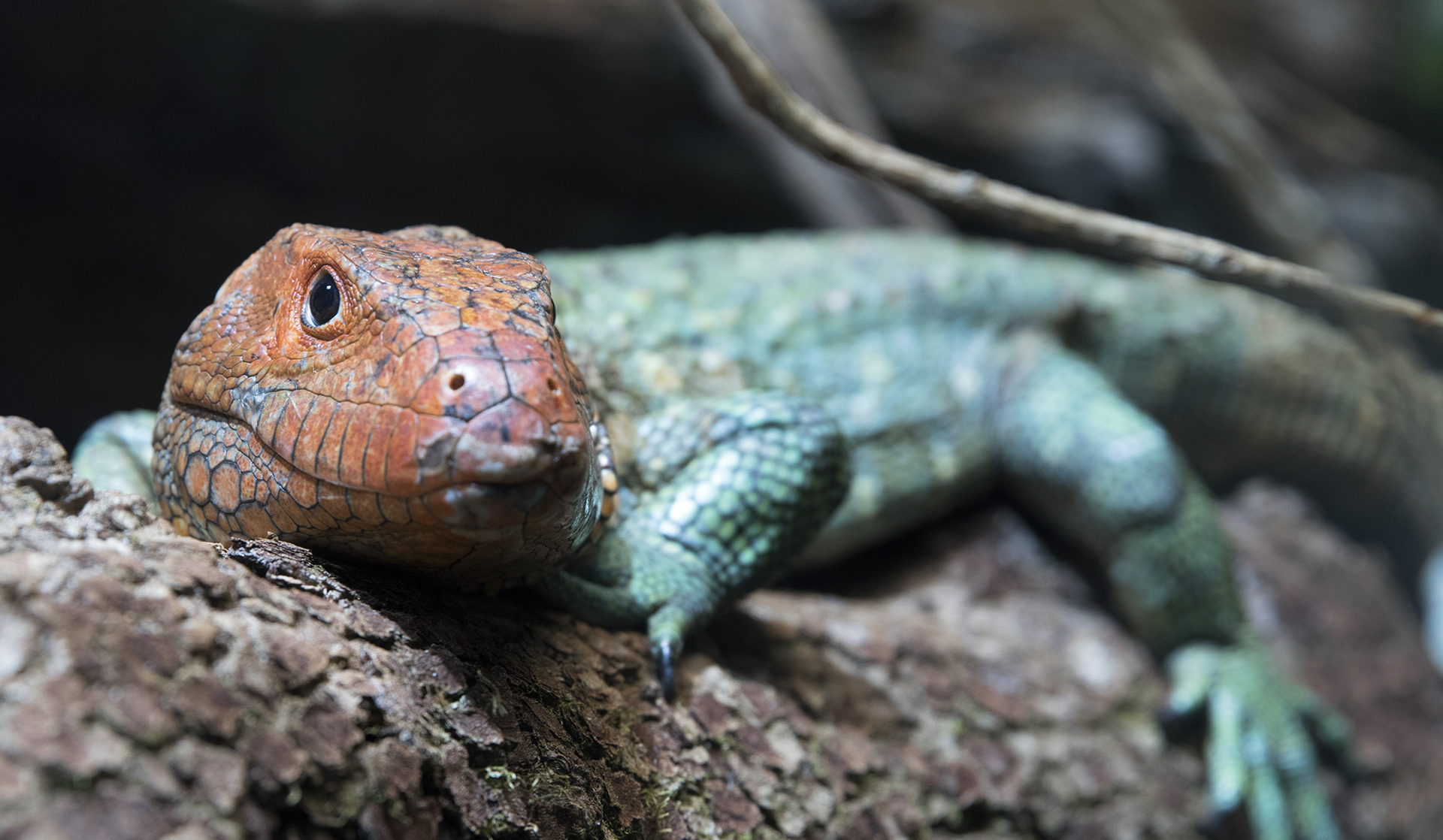Summary of Caiman lizards: beautiful and highly adapted predators:
Logan, a new care team member at Zoo Atlanta‘s Herpetology Department, introduces the northern caiman lizard (*Dracaena guianensis*), sharing details about its characteristics and natural habitat. Initially displayed next to the diamondback terrapins, an elderly caiman lizard was moved behind the scenes due to its age-related needs and later humanely euthanized following a decline in health. Logan highlights the species’ South American origins, aquatic and climbing lifestyle, a carnivorous diet that includes hard-shelled prey, and notable physical features such as a long, flat tail for swimming, powerful jaw, and distinct sage-olive and red-orange coloration. The narrative serves to educate on the caiman lizard’s ecology and Logan’s personal connection to the species.
– The ecological significance of the northern caiman lizard in its native habitat.
– Physical adaptations that make the northern caiman lizard an adept hunter.
– The role of zoo habitats in conservation efforts for species like the northern caiman lizard.
– Challenges in the conservation of the northern caiman lizard and how they are being addressed.
The northern caiman lizard, scientifically known as Dracaena guianensis, serves as a prime example of nature’s ingenuity in evolution and adaptation. Native to the northern parts of South America, including countries like Peru, Ecuador, and Colombia, this species showcases a variety of adaptations that allow it to thrive in its natural habitat. This article explores the ecological importance of the northern caiman lizard, diving into its unique physiology, the pivotal role zoos play in its conservation, and the ongoing efforts to protect this fascinating species.
The ecological significance of the northern caiman lizard cannot be overstated. As a semi-aquatic creature, the northern caiman lizard is integral to maintaining the balance within its ecosystem. It primarily feeds on freshwater snails, clams, and crayfish, a diet that helps control the populations of these invertebrates and prevents them from overwhelming local biodiversity. By consuming these hard-shelled prey, the northern caiman lizard demonstrates its role as a keystone species, one whose presence and feeding habits have a disproportionately large effect on its ecological community.
Physically, the northern caiman lizard is a marvel of evolutionary adaptation. Its long, flat tail is a powerful tool for swimming, enabling fast and agile movement through water. This adaptation is crucial both for hunting prey and evading predators. The northern caiman lizard’s jaw strength is another highlight, capable of crushing the hard exteriors of its prey. This is complemented by rounded molar teeth at the back of their mouth, specialized for breaking the shells of snails and clams to access the soft meat inside. Additionally, the presence of a nictitating membrane acts as a protective and vision-enhancing layer over the eyes when submerged, ensuring the lizard can spot prey and predators alike during its aquatic pursuits.
The significance of zoo habitats extends beyond mere spectatorship; they play a pivotal role in the conservation and study of species like the northern caiman lizard. Zoos provide controlled environments where these lizards can be closely observed and cared for, especially significant for aging or ill individuals who may struggle to survive in the wild. Such controlled settings allow for detailed research into their behavior, diet, and physiological needs, contributing valuable information to conservation strategies. Furthermore, by showcasing these creatures to the public, zoos foster a connection between humans and wildlife, raising awareness and support for conservation efforts.
Conservation challenges for the northern caiman lizard are multifaceted, including habitat destruction, pollution, and illegal trade. Addressing these threats requires a coordinated approach that combines field research, habitat protection, and legal enforcement. Research programs aim to better understand the habitat requirements and migratory patterns of the northern caiman lizard, informing conservation management plans that protect critical areas. Anti-poaching measures and stringent regulations on wildlife trade are also crucial to minimize the impact of human exploitation. Efforts to rehabilitate and reintroduce injured or confiscated individuals into protected habitats further bolster the population in the wild, contributing to the species’ long-term survival.
The northern caiman lizard embodies the intricate balance of ecosystems and the remarkable adaptability of life. Its presence in South American waterways is a testament to the complexity and interconnectedness of aquatic and terrestrial habitats. Through conservation efforts, research, and public education, zoos play an indispensable role in safeguarding the future of the northern caiman lizard. These endeavors not only benefit the species itself but also enhance our understanding of biodiversity and the importance of preserving the natural world for future generations.


